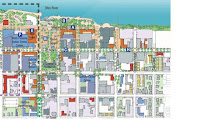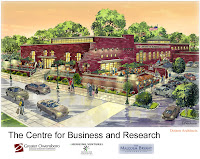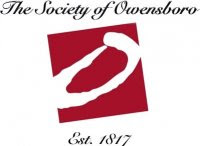By
Keith LawrenceMessenger-Inquirer
An 85-year-old former tobacco warehouse near downtown Owensboro will soon be converted into high-tech lab space to search for cures for cancer and other diseases.
The Greater Owensboro Economic Development Corp., Kentucky BioProcessing LLC and city and county officials will join with representatives of half a dozen Kentucky colleges and universities at 10 a.m. Tuesday to announce plans for the Centre for Business and Research at 1016 Allen St.
Nick Brake, EDC president, said the 37,000-square-foot building will be the anchor for the Carnegie Village development planned in the area around Ninth and Allen streets. Details will be announced Tuesday. The village takes its name from the nearby Carnegie Building, the original section of the Owensboro Museum of Fine Art.
Brake said the warehouse will undergo extensive renovations to get ready for technology-based companies that will use it for research and incubator office space. "Kentucky BioProcessing has run out of lab space," Brake said. "The companies they work with need lab space in Owensboro."
Between 5,000 and 8,000 square feet of the building will be devoted to labs.
The rest will be used for office space for new companies and an accelerator program that lets businesses that start in the center expand into additional space until they are ready to move out into their own buildings.
The warehouse has had a colorful past, serving as home to such nightspots as Rockafellas, Amnezia and The Underground, the YB Corral western dance club and most recently, Common Ground, a Christian teen club.
Now, Brake said, the building will be used to leverage university research in Owensboro.
Western Kentucky University will assign several doctoral-level research faculty members to the facility to work with graduate students, he said.
Western already has a food manufacturing degree that's only offered at its Owensboro campus.
A food lab will be part of the center, Brake said, with an industrial kitchen that can be used for startup companies to test their products and develop them for market.
Madison Silvert, EDC vice president, said local colleges will use some of the space for undergraduate programs. He sees companies being created by former students to develop products they discovered in their research.
The proximity to Brescia University will be helpful, Brake said. "There are business incubators all over the country," Silvert said. "But there are very few business accelerators."
Incubator space is usually only available to start-up companies for the first year, he said.
But the next few years are when companies are the most vulnerable, until profits start coming in, Silvert said.
The accelerator space will give companies room to grow until they're ready to build, he said.
Brake said the center will have high-speed Internet and the type of security that such a building requires. Seven universities and colleges will be affiliated with the center, he said. The list includes the University of Kentucky, University of Louisville, Western, Murray State University, Brescia, Kentucky Wesleyan College and Owensboro Community & Technical College.
Brake said several clients are already interested in leasing space.
Silvert said EDC is talking with out-of-state venture capital companies about providing grants and loans for businesses in the center. "They tell us this is unique in the Midwest," he said. "Some are interested in office space so they could be near their clients."
Brake calls the project "a 21st century industrial park."
Development will take several years, he said. EDC did a "rigorous site selection search," Brake said. The warehouse is owned by Malcolm Bryant, a developer who serves on the EDC board. Bryant will lease the space to the center. "We considered a number of sites," Brake said, "including building a new facility next to KBP in MidAmerica Airpark."
But the cost of leasing and renovating are much lower than building from scratch and the location near both downtown and Brescia makes the Allen Street site very attractive, he said.
Brake said the Carnegie Village development will anchor the southern edge of downtown and is part of the Gateway Planning Group's master plan for downtown.
 In 2009, the United States Congress will be due for passage of another 6-year bill authorizing federal transportation spending. The federal transportation bill sets both funding targets and federal transportation policy. Rather than a simple reauthorization of existing policy, the 2009 bill is expected to be a turning point for new policies and funding formulas, in recognition of the urgency of national needs-- everything from obesity prevention, escalating fuel prices, the need for energy independence from Middle East oil, the battle against global climate change, to the aging infrastructure of America's roadways and bridges.
In 2009, the United States Congress will be due for passage of another 6-year bill authorizing federal transportation spending. The federal transportation bill sets both funding targets and federal transportation policy. Rather than a simple reauthorization of existing policy, the 2009 bill is expected to be a turning point for new policies and funding formulas, in recognition of the urgency of national needs-- everything from obesity prevention, escalating fuel prices, the need for energy independence from Middle East oil, the battle against global climate change, to the aging infrastructure of America's roadways and bridges.
.png)



































